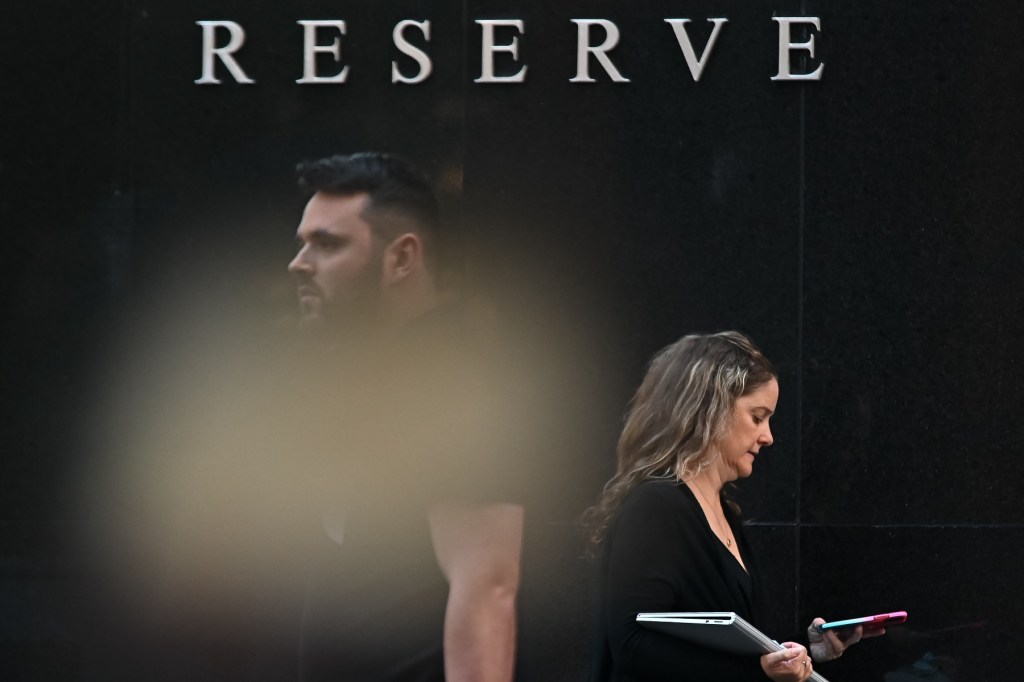What the collapse of a major book retailer tells us about the state of Australian publishing

- by Admin
- July 11, 2024
The collapse of popular website Booktopia is highlighting how much Australia’s publishing industry relies on patriotic retailers to keep itself both diverse and financially viable.
Printing books is a numbers game, and the bench line for an Australian “best seller” might surprise you.
In the United States, where the New York Times publishes its globally revered bestseller lists, a book needs to sell between 1,000 to 10,000 copies in just one week to make the cut.
The Australian market is much smaller and unless you’re putting out Liane Moriarty, publishers don’t bet on overseas sales to push a title.
Meaning, for a mid-range publisher, an homegrown bestseller is a book that sells 5,000 copies — over its entire lifetime.
Bigger houses are more conservative, cracking open the champagne at about 10,000 copies.
And these days, it’s probably not always Dom Pérignon.
Rising costs
Putting out a book is getting more expensive.
The price of freight and paper is going up, and publishers have been reluctant to jack prices in response, fearing they’ll spook Australia’s dwindling number of readers during a cost-of-living crisis.
“We’re seeing margins get a lot thinner over the last five years,” Andrew Ledovskikh, IBISWorld senior industry analyst recently told me about Australia’s publishing industry.
This means the numbers game is getting even more important to putting out an Australian title.
Want to crack 5,000? You need a supportive retailer.
Who is actually helping publishers sell Australian books?
Australian book sales data is weirdly opaque.
The best source is said to be Nielsen Bookdata, which puts out a weekly report called the Top 5000.
Publishers pay a lot of money to get access to this litmus test into Australian readers, and Nielsen makes them sign contracts saying they won’t share what they get externally.
(Especially not to journalists. My email is terzon.emilia@abc.net.au if you’d like to be an anonymous source.)
The Nielsen data is said to be grouped into three sectors: independent bookstores; chains and online retailers; and discount department stores (DDS) like Big W and Kmart.
As well as low-cost kitchenware and beauty dupes, those discount stores owned by competitors Woolworths and Wesfarmers are today said to be selling the most Australian books by volume.
The DDSs are known for deep discounts on books, and the deals that publishers are striking with them to get this happening are closely guarded.
Some in the book business will tell you Kmart and Big W’s buying habits are pushing publishers into investing in more “commercial” Australian titles, like the current BookTok romance trend known by some as “fairy porn”.
“Publishers require large print runs to keep their unit costs down,” Robbie Egan, who heads up the industry group BookPeople, told me this week.
“And that means they’re kind of addicted to the print runs that come through the discount department stores.”
None of the DDSs would comment.
Their websites are currently promoting a range of Australian titles, including cook-books, Tim Winton and, yeah, some of that fairy porn.
Team effort
The industry group for publishers maintains that all sections of the market are important to keep Australian publishing viable.
When it comes to who is selling the widest range of titles, that is said to be the independent bookstores.
This speaks to your humble suburban bookstore’s reputation for championing early career voices.
Those ones you won’t find next to Bluey in Kmart.
Take the Sydney shop Better Read Than Dead, which I went into this week for this story.
According to Nielsen data, the top selling book right now in Australia is All Fours by the American writer Miranda July, which globally has also made that famed New York Times bestseller list.
That book about a woman up-ending her life is Better Read Than Dead’s third highest seller right now.
But it’s #1 is actually a far-less famous book by a Sydney writer, Dylin Hardcastle, which Better Read Than Dead held a signing event for instore before its formal launch at a Sydney bar.
As Dylin told me recently, they feel “indebted” to independent stores for their flourishing career.
“The best thing about an indie bookseller is their passion for hand selling instore,” Dylin says.
And Australian writers certainly need all the help they can get.
Researchers have found the average Australian writer earns just over $18,000 from their writing.
Many are lucky to ever reach the threshold to receive royalties off their work, as one writer who put out a book in the last year just reminded me.
In their view, this situation is actually an argument in favour of trying to get your book out to a mass market audience in the aisles of Kmart.
This week’s Australian best sellers |
||
|---|---|---|
| 1 | All Fours by Miranda July | USA |
| 2 | Long Island by Colm Tóibín | Ireland |
| 3 | Blue Sisters by Coco Mellors | USA |
| 4 | Storm Child by Michael Robotham | Australia |
| 5 | The Bee Sting by Paul Murray | Ireland |
| 6 | Kairos by Jenny Erpenbeck | Germany |
| 7 | The Forever War by Nick Bryant | UK |
| 8 | Caledonian Road by Andrew O’Hagan | UK |
| 9 | Table for Two by Amor Towles | USA |
| 10 | Butter by Asako Yuzuki | Japan |
And what about the other book retailers?
Away from the discount department stores and independent bookstores, you’ve got the bigger chains like Dymocks.
Again, the data here is sparse.
IBISWorld analytics, just put out in May, has Brisbane’s QBD Books selling $155 million overall a year, followed by Dymocks at $107 million.
These numbers don’t just include book sales but also items like gift cards.
“The chains are good at balancing a depth of stock,” the industry association for publishers, the APA, told me in a statement.
Loading…
Then you’ve got the online retailers, which have been the biggest growth for years now.
IBISWorld data has Booktopia as selling $200 million a year, outstripping its main rival Amazon, the American company owned by Jeff Bezos.
This data is old, however, and some publishers dispute it.
Booktopia was important
Anecdotally, Booktopia was a champion of new release Australian titles, and would regularly hold promotional events for them at its robot-staffed warehouse in Sydney, before its spectacular collapse into administration.
It’s unclear if Booktopia will be saved. It could be managed out of its woes, totally liquidated into many parts, or snapped up by a buyer.
It is understood there has been early interest from dozens of parties in the business, including from QBD Books and an online site that’s more well known for selling vacuums, Kogan.
Only a lengthy administration process will tell what happens, or whether tens of thousands of customers owed books will ever get them or their money back.
“There’s a great deal of sadness in the industry about Booktopia,” publishing expert Dr Jan Zwar from Macquarie University told me.
“Booktopia has been a fantastic supporter of Australian authors and Australian publishers.”
Dr Zwar’s sentiments are reiterated by the publishing industry body.
“Online sellers have been the fastest growing bookselling segment over the past two decades,” the APA said in its statement.
“Booktopia kept Australians reading throughout COVID, and they were a welcome and supportive Australian presence in the market.
“While many independent and chain bookstores offer online buying, there is a risk to Australian authors and publishers from platforms with algorithms which often prioritise overseas rather than local titles.”
Some are more explicit than this, pointing fingers at Amazon.
“It’s little bit depressing,” Better Read Than Dead’s buyer Lexie Eatok told me.
“Booktopia just disintegrated and they were an Australian business, and it was run down by Amazon.”
Amazon says it does support Australian authors. Anecdotally, it is a good seller for back-listed Australian books that aren’t new releases.
Its algorithm will also promote local titles to you.
Clearly, it knows I’m a business journalist based in Australia.
When I just hopped on, I got promoted a bunch of finance titles, many of them by local writers.
Yet, when asked for a breakdown of its Australian versus non-Australian sales data in our market, Amazon did not respond.
It is also worth noting that selling an Australian book doesn’t just rest on a retailer’s landing page.
It takes an entire ecosystem of promotion, which is why people say the trend away from traditional media to things like BookTok is so interesting.
So what does this all mean for publishing?
With Booktopia or not, some maintain that Australian publishing is in good shape.
The entire ecosystem doesn’t just rely on selling local titles.
If you’re a big publishing house – maybe a subsidiary of a global company like Penguin Random House, which is the biggest player in the Australian market – you’re also selling a lot of overseas books.
Nielsen’s public data shows the highest selling author in Australia last year was American young adult writer Colleen Hoover, selling 878,000 books.
While the top selling single title was the cookbook RecipeTin Eats by Australian chef, Nagi Maehashi, with 254,000 sold.
In a statement, Nielsen told ABC News sales have dropped by 3 per cent so far this year compared to the same period, to around half a billion dollars.
Some in publishing say this lower figure hides rising sales on audio books.
“The rise of audiobooks has been swift, and that trend looks set to continue,” the APA said in its statement.
“Print books are still the preferred format over ebooks, including amongst younger readers.”
Loading…
For the little guys, the ones putting out those voices you might only find in Better Read Than Dead, it has been anecdotally tougher times.
“While I would say it is a tough period,” Dr Zwar says.
“As a researcher of the industry, I have confidence in the future of the Australian industry.”
“I think the people who work in it are actually really committed to serving our Australian culture through it.”
The APA is also holding strong, while acknowledging the most depressing part of this story: people just aren’t reading as many books.
“Reading frequency is trending downwards, something we’d like to reverse,” the industry group said.
“Reading offers important social and community outcomes, in addition to the significant economic impact books provide, including supporting 30,000 jobs for authors, publishers, booksellers and library staff,” the APA said in its statement.
The moral of their story? Get off Netflix and bury your head in a book.
The Latest News
-
December 25, 2024Christmas at the ‘G! Aussie stars and family lap up big day
-
December 25, 2024‘They’re the idiots who picked me’: Aussie skipper’s hilarious message to relieve pressure on new opening sensation
-
December 25, 2024Aussie path to Champions Trophy glory begins with Ashes clash as schedule revealed
-
December 24, 2024‘Good to go’: Head’s cheeky injury jab as ‘unbelievable’ Aussie run machine gets green light
-
December 24, 2024Head passed fit as Australia reveal XI for Boxing Day | cricket.com.au




